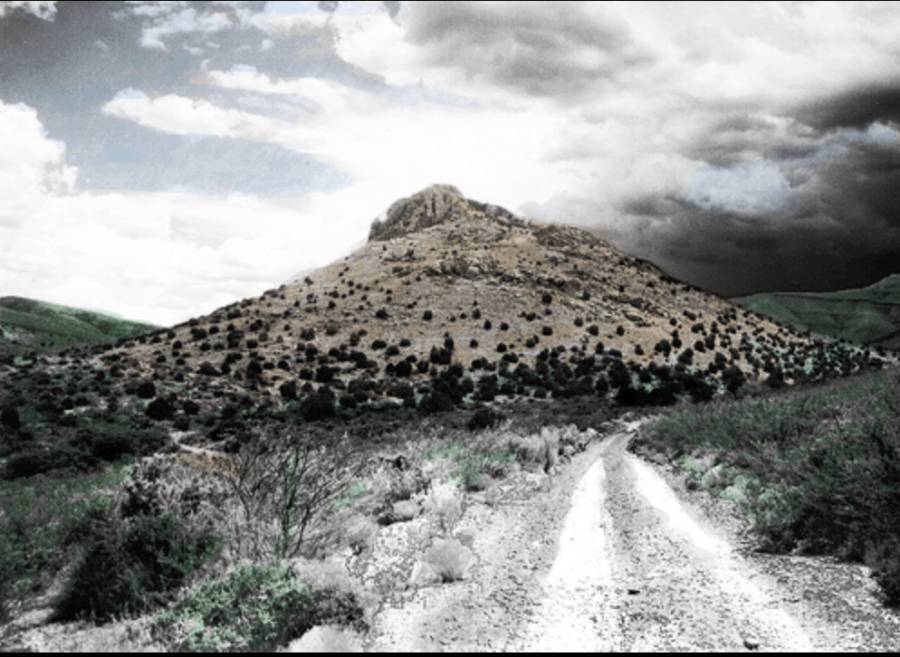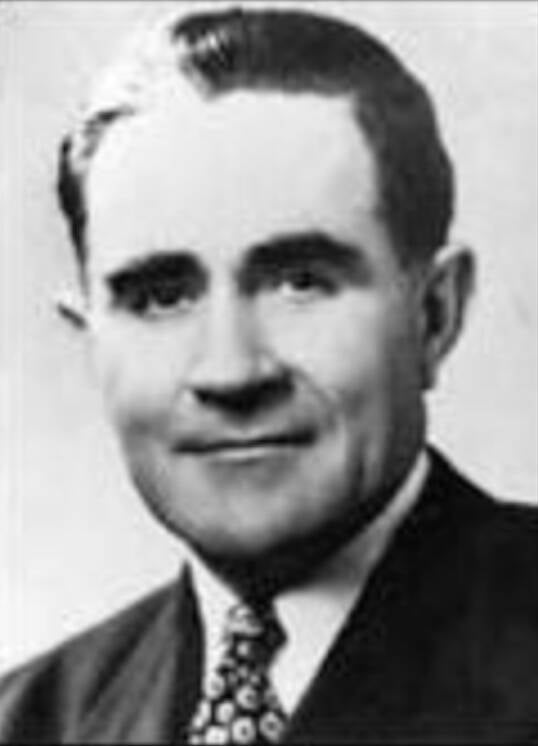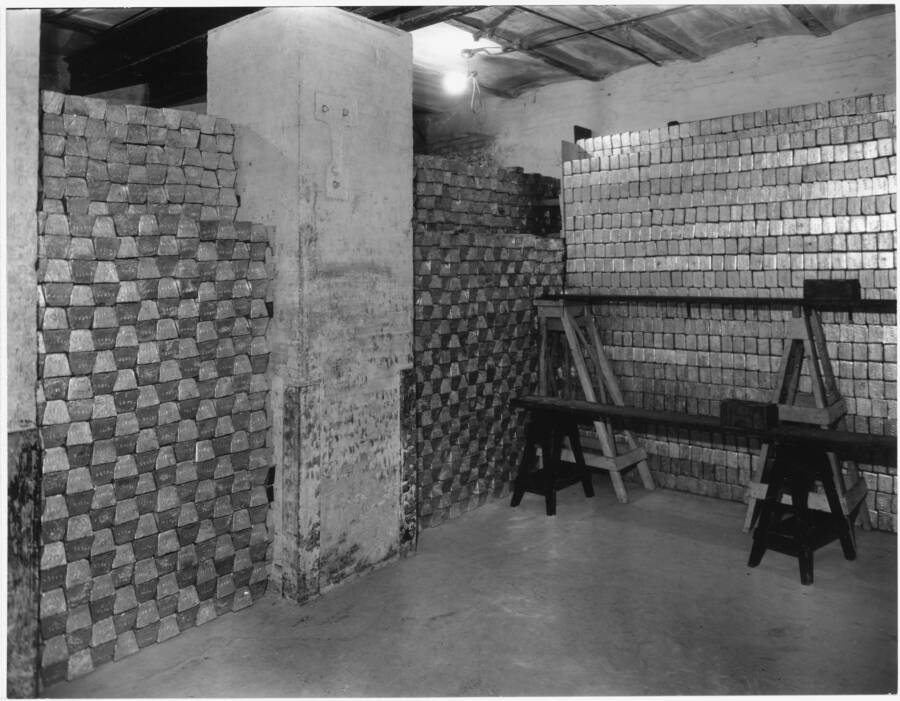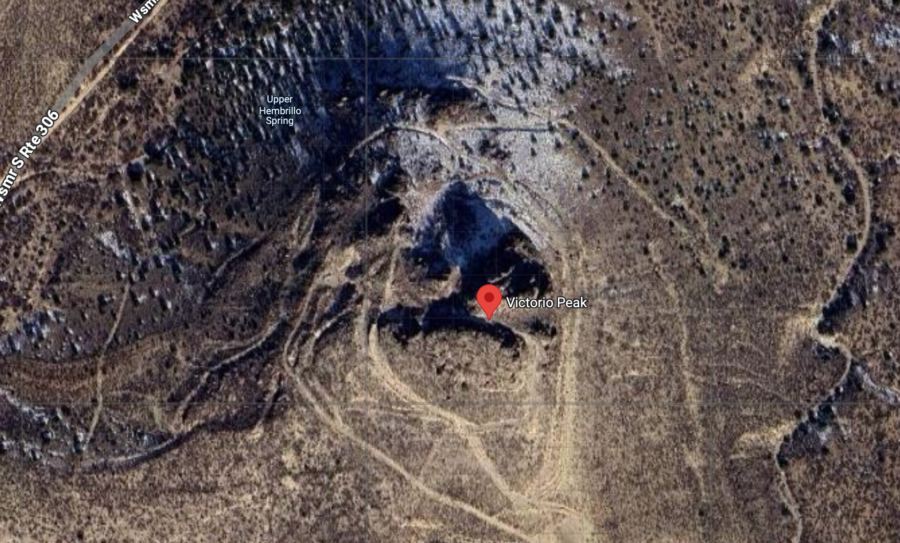The twisting tale of the Victorio Peak treasure has everything — a mysterious mineshaft, stacks of gold bars, murder, and a top-secret military base. But was the treasure even real?

Wikimedia CommonsCaverns hidden deep inside Victorio Peak contained gold bars, jewels, and skeletons, according to Doc Noss.
Since the 1930s, rumors have circulated about a mysterious hoard of gold worth billions of dollars said to be hidden inside New Mexico’s Victorio Peak.
The quest to find this rumored treasure eventually cost one man his life — and consumed his family members for generations. To this day, no one has been able to prove that the Victorio Peak treasure really existed.
But that hasn’t stopped people from looking.
Finding The Victorio Peak Treasure
This bizarre story begins with Milton “Doc” Noss, a self-taught foot doctor who lived in the deserts of New Mexico with his wife, Ova “Babe” Noss, in the 1930s.
In November 1937, while out deer hunting, Doc scrambled up the side of Victorio Peak, a craggy outcropping in the Hembrillo Basin. While there, he allegedly noticed something strange: a draft of air tickling his leg. He realized the breeze was coming from beneath a rock — and when he removed the rock, he discovered a shaft leading deep into the mountain.
Doc returned home and told his wife, Babe, what he’d found. The pair returned to the mountain to investigate, armed with ropes and flashlights. With Babe’s help, Doc descended down the mine shaft — and allegedly discovered a complex network of caves within Victorio Peak, filled with dozens of skeletons.
Doc claimed that in the mountain’s inner chambers, he found untold riches: chests filled with jewels and gold coins, letters from the 19th century, Spanish armor from the conquistador era, a gold statue of the Virgin Mary, and other priceless relics.
There were also allegedly 16,000 bricks of dark metal stacked up along the cavern walls. At first, Doc barely paid attention to them, assuming they were merely made of pig iron.
But Babe, who was not thin enough to descend the shaft herself, insisted that Doc carry up some of the bricks to show them to her.

Wikimedia CommonsDoc Noss claimed that he found gold worth billions in today’s dollars.
“That’s the last one of them babies I’m gonna bring out,” Doc told his wife as he handed her a heavy bar, according to a 1991 Los Angeles Times article.
Babe inspected the bar.
“Well, Doc, this is yellow!” she exclaimed. “Look at it!”
“Well, Babe, if that’s gold and all that other is gold,” Doc replied, “we can call John D. Rockefeller a tramp!”
Hiding The Victorio Peak Treasure
As legend goes, the Nosses set up a camp at the base of Victorio Peak and got to work hauling out riches. But removing the heavy bricks was a difficult task.
“My grandfather was climbing down this vertical fissure of 100 feet, squeezing under rocks and boulders and very few people could follow him in there,” explained the Nosses’ grandson Terry Delonas.
In nearly two years, Doc allegedly only managed to haul 200 gold bars out from the underground cavern.
But there was another problem. Congress had recently passed the Gold Reserve Act, effectively banning the private ownership of gold. This would have made it difficult for the Nosses to sell their riches.
So instead, they allegedly hid much of the treasure in the desert surrounding Victorio Peak as they searched for black market buyers.

National Archives and Records AdministrationStandard gold bars like the ones stored in the San Francisco mint in 1935 weigh around 27 pounds. The bars in Victorio Peak allegedly weighed as much as 80 pounds each.
Eventually, in 1939, the Nosses hired an engineer to blast the shaft open to make it easier to reach the gold. Instead, the explosion caused the shaft to collapse — blocking access to the treasure altogether.
Apparently distraught over the loss of his fortune, Doc Noss abandoned both Victorio Peak and his wife. He returned a decade later with a new wife and a renewed resolve to recover the treasure.
However, the search for the Victorio Peak gold would soon cost Doc his life.
The Shocking Death Of Doc Noss
Doc Noss returned to Victorio Peak in 1949 with a plan. He’d convinced a Texan named Charley Ryan to invest $28,000 in the Victorio Peak treasure, promising Ryan gold if he helped fund a project to reopen the collapsed shaft.
Instead, Doc, supposedly fearing Ryan was planning to steal the treasure, allegedly hid 110 of his gold bars in the desert.
When Doc never delivered on the promised gold, Ryan accused Doc of conning him. According to The Deming Headlight, Ryan was packing his things to head back home to Texas on March 5, 1949 when Doc suddenly stormed in and attacked him, shouting that he was going to kill him.
As Doc ran back to his car, allegedly to grab his gun, Ryan pulled his own gun on Doc — and shot him twice.
Doc Noss died with just $2 in his pocket.
To this day, Doc Noss’ treasure remains missing. Tony Jolley, a rodeo rider whom Doc had purportedly enlisted to help bury the 110 gold bars back in 1949, claimed he later returned to the site and found 10 of them.
But even if that’s true, 100 of the gold bars are unaccounted for — not to mention the other bars Doc had purportedly hidden elsewhere in the desert.
Victorio Peak And The U.S. Army
The saga of Victorio Peak was not over yet. Doc Noss’ ex-wife, Babe, continued to search for the treasure. Then, in 1955, the U.S. Army claimed the land surrounding the mountain to expand the White Sands Missile Range, forcing Babe off the site.
Soon, however, rumors about the hidden fortune attracted airmen from the nearby Holloman Air Force Base.
In 1958, four airmen scrambled over Victorio Peak looking for an entrance to the caverns. One of them, Thomas Berlett, later claimed they struck gold, uncovering piles of heavy gold bars.
Instead of hauling out the treasure, the airmen dynamited the cave to seal it and then asked the military for permission to excavate. It took three years and a series of polygraph tests for the Air Force and Secret Service to finally agree.
But when they returned to Victorio Peak in 1961, Berlett claimed they couldn’t find their way into the caverns. They were swiftly ordered off the site; they never saw the gold again.
“We were very young and maybe a little too naive,” Berlett told the Los Angeles Times. “I was 19. I still had a little too much confidence in my government.”

NASAThe missile testing range at White Sands expanded in the 1950s, eventually placing Victorio Peak under U.S. military control.
Soon after this incident, witnesses reported seeing Army trucks, helicopters, and crews at Victorio Peak — and they allegedly appeared to be removing something. The Army eventually admitted that it had indeed conducted work at the site but denied finding any gold there.
But over the years, some have theorized that the Army did remove the gold, and secretly transported it to Fort Knox. In 1961, a man named Captain Orby Swanner worked at White Sands. He reportedly told his brother-in-law, Gene Erwin, that he had helped the Army haul $300 million in gold from Victorio Peak that year.
“They can look all they want,” Erwin told the Los Angeles Times in 1991, “but they ain’t gonna find anything there because the Army already took it.”
The Final Push To Recover The Treasure
The Noss family never gave up on the search for the Victorio Peak treasure. In 1963, Babe Noss, backed by the New Mexico Museum, was given access to Victorio Peak for 60 days. But even after hiring a mining company to burrow a tunnel into the mountain, she never found the treasure.
When Babe died in 1979, Her grandson Terry Delonas took over the search. In the 1990s, he convinced the Army to allow him to conduct a thorough search of Victorio Peak.
“We have always believed that the gold was still there,” Delonas told the New York Times in 1992.
From 1992 to 1996, Delonas worked with mining, geology, and construction experts to forge a path through the mountain. But just when Delonas felt he was getting close, the Army forced the team off of the site, alleging that Delonas’ team had stopped paying the steep monthly fees to access to peak. Both parties sued the other, then dropped the suits. Delonas never found the treasure.

Google MapsRoads around Victorio Peak hint at the search for treasure that has gone on for decades.
What Happened At Victorio Peak?
Over the years, many have theorized that the Victorio Peak treasure was a hoax invented by Doc Noss so he could convince people to invest in the search, and then pocket the money. Indeed, obstacles like the collapsed mine and the Gold Reserve Act would have served as convenient excuses for his inability to provide skeptics with any evidence of the treasure.
If this theory is true, Doc had apparently gone so far as to hide the truth from his wife, Babe.
Others believe the treasure was real, and that the only reason it hasn’t been found is that the Army confiscated it decades ago.
But even if there was gold at Victorio Peak, where did it come from?
One theory suggests that Doc had uncovered a Spanish cache hidden by conquistadors in the 1500s. According to another theory, the treasure had belonged to Mexico’s Emperor Maximilian. Legend has it that Maximilian had hidden his treasures in the United States just before his assassination in 1867.
In the 1870s, the Apache chief Victorio, for whom the mountain is named, reportedly led a number of raids in the area, amassing a fortune by looting stagecoaches. Some have theorized that it was this treasure that ended up in Victorio Peak.
So was the treasure real? While no one has ever offered concrete proof, geophysicist Lambert Dolphin claimed to have found caverns deep within Victorio Peak in 1990 — and that they seemed to match Doc Noss’ descriptions.
“I go on treasure hunts of any kind for clients in the U.S. and overseas,” Dolphin explained. “Most of these treasure stories are mythology. But Doc Noss’ story is probably one of the more believable ones.”
The mystery of the Victorio Peak treasure may never be solved. Next, learn about Tommy Thompson, the treasure hunter who went to jail rather than reveal the location of $4 million in gold. Then, read about the hunt for the pirate gold known as the Oak Island Treasure.





